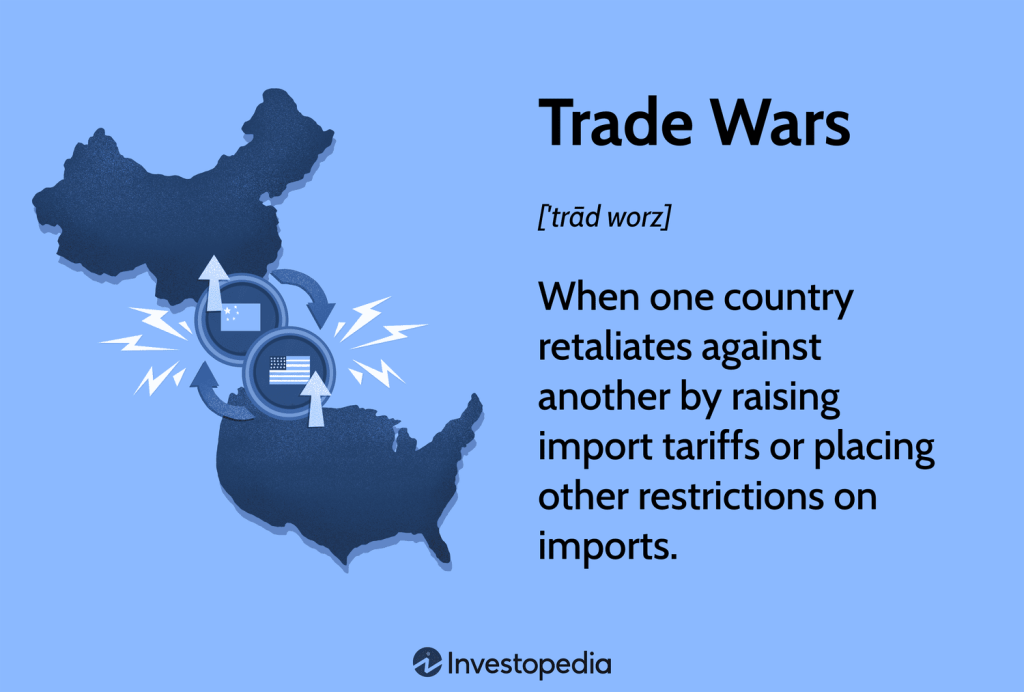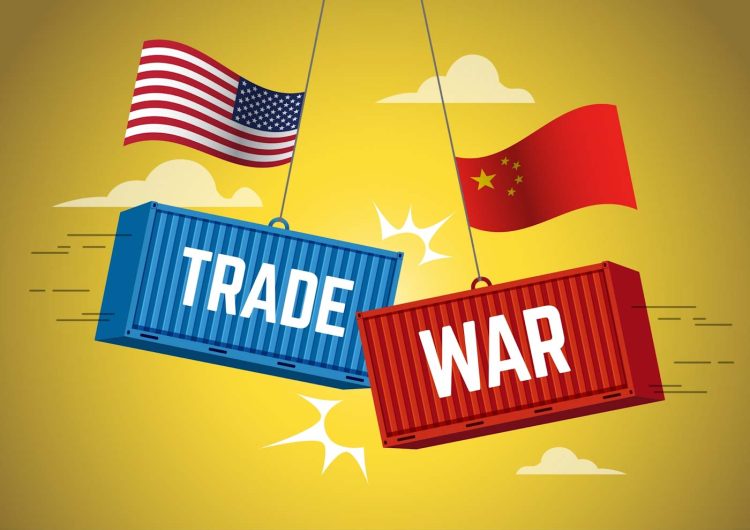Introduction
Trade wars are as old as international commerce itself, but in the 21st century, they have taken on new significance, reshaping global economic and geopolitical landscapes. The rise of protectionism, coupled with the increasing use of tariffs and non-tariff barriers, has turned trade disputes into strategic confrontations between world powers.
This article explores the geopolitics behind trade wars, analyzing how shifting power dynamics between major economies—especially the United States and China—are influencing not only global trade but also political alliances, security, and technological supremacy.
1. The Historical Context of Trade Wars
Trade wars have always been intertwined with broader geopolitical ambitions. For centuries, countries have used tariffs and trade restrictions as tools to assert economic dominance:
- The Smoot-Hawley Tariff Act (1930): A key moment during the Great Depression, this tariff was intended to protect American businesses but led to a global trade collapse.
- The Cold War Era: Trade barriers became a key part of geopolitical struggles between the U.S. and the Soviet Union, with both sides using trade as a tool of influence in the developing world.
In the modern era, trade wars no longer just affect economic transactions—they have become deeply embedded in broader geopolitical strategies.
2. Geopolitical Motivations Behind 21st Century Trade Wars
Today’s trade wars are driven by multiple factors beyond economic protectionism:
- Technological Supremacy: As technology becomes a dominant driver of economic power, trade wars increasingly focus on access to cutting-edge technologies like semiconductors, AI, and 5G networks.
- Supply Chain Resilience: Countries, particularly the U.S., have learned the vulnerabilities of global supply chains exposed by crises such as the COVID-19 pandemic.
- Geostrategic Rivalries: Trade wars are used as proxies for broader geopolitical struggles, with economic measures often serving as tools in larger battles for global influence.
These factors make contemporary trade wars more complex and interconnected than past trade conflicts.

3. The U.S. vs. China: Economic Competition and Strategic Confrontation
The ongoing trade war between the U.S. and China highlights the centrality of economic competition in modern geopolitics:
- Tariffs and Technological Competition: The U.S. has imposed tariffs on Chinese goods and restricted Chinese tech giants like Huawei from accessing American technology, citing national security risks.
- Belt and Road Initiative (BRI): China’s global infrastructure development project aims to expand Chinese influence, often bypassing traditional Western-dominated financial systems.
- Decoupling: Both nations are working to “decouple” key sectors of their economies, including technology and manufacturing, creating separate economic spheres with limited interconnection.
This dynamic has far-reaching implications for not just the two countries involved but for the global economy.
4. The Impact of Trade Wars on the Global Economic Order
Trade wars between major economies threaten to unravel decades of economic integration:
- Global Supply Chains at Risk: Companies are rethinking global supply chains in response to tariffs, with some moving production out of China to other regions.
- Economic Growth Slowdown: Prolonged trade tensions discourage investments and can slow down global growth, as seen in the sluggish recovery from the 2008 financial crisis.
- Increased Nationalism: Countries involved in trade wars often turn inward, fostering nationalism and reducing international cooperation, which undermines global stability.
The international trading system, built on principles of free trade and global cooperation, faces increasing strain from these tensions.
5. Future Outlook: The New Global Trade Order
While trade wars bring significant short-term disruption, they also lead to the emergence of new global trading dynamics:
- Regional Trade Agreements: As trade wars weaken traditional multilateral platforms like the WTO, countries are turning to regional agreements, such as the RCEP (Regional Comprehensive Economic Partnership) in Asia.
- Economic “Decoupling” and Fragmentation: The U.S. and China’s decoupling could create two distinct economic zones—one centered around China’s Belt and Road Initiative and one around Western economies.
- Digital Trade Wars: As the world becomes more digitized, cyber threats, digital privacy concerns, and data sovereignty issues will become a major battleground in future trade wars.
Conclusion
The geopolitics of trade wars are reshaping the global economic landscape in unprecedented ways. As countries vie for economic supremacy, new alliances, trade practices, and power structures are emerging. Understanding these dynamics is crucial for navigating the evolving global order in the 21st century.
















































